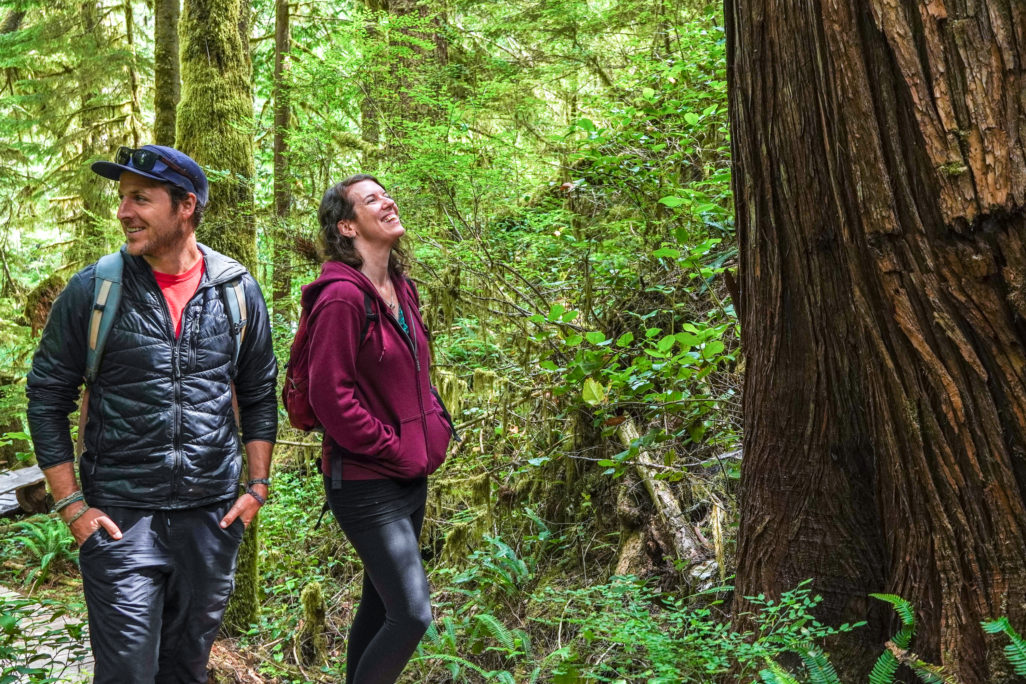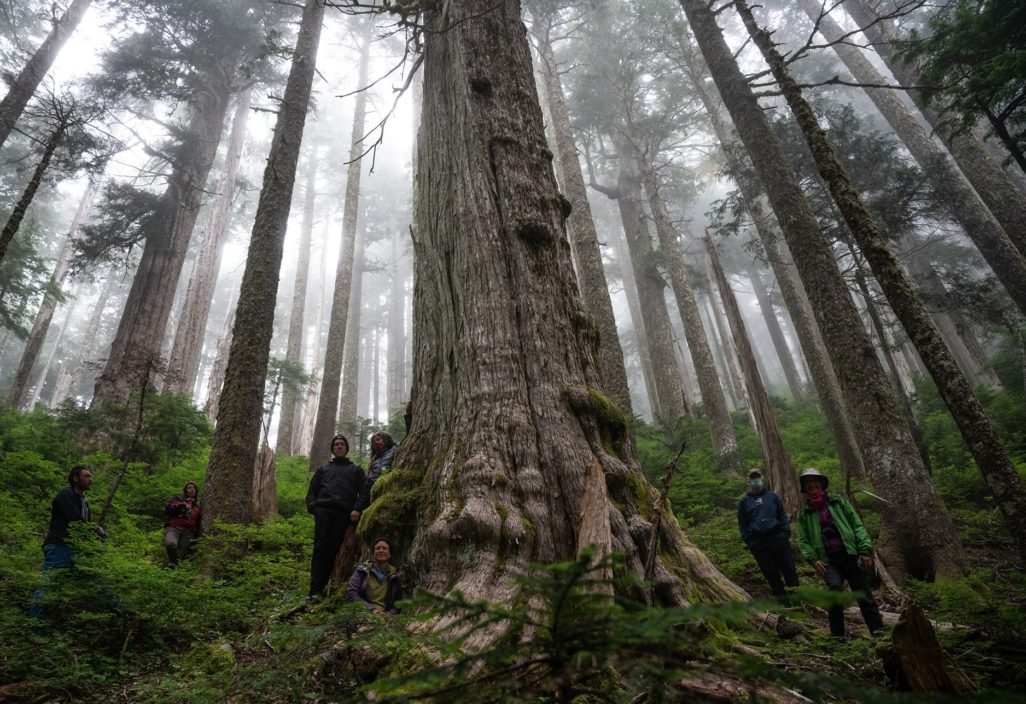
Torrance Coste and Emily Hoffpauir, campaigners with the Wilderness Committee near Carmanah Walbran Provincial Park on Vancouver Island. They are part of a new wave of old-growth forest defenders in BC. Photo by Serena Renner.
It’s not mom and dad’s ‘War in the Woods.’ Meet the forest rebels trying to decolonize direct action. Last in a series.
By Serena Renner
Torrance Coste’s dusty Nissan XTerra disappears in a cloud of grey dirt. He’s checking out recent logging activity around Carmanah Walbran Provincial Park on southern Vancouver Island for the Wilderness Committee. I’m trailing behind, trying not to blow a tire, lose his taillights, or get run off the road.
Another logging truck smokes past — the eighth so far this morning. It’s stacked with old-growth hemlock and a red cedar at least a metre thick. A few minutes later, we’re stopped by a pile of tree carcasses blocking the road. Active logging. No entry.
We can hear chainsaws and a grapple yarder, a giant pincer that chomps then drags felled trees up the hillside. We get out of the car and Coste explains why it matters how long those trees have been alive.
“Second-growth forest pales in comparison to old growth from an ecological standpoint, from an Indigenous cultural standpoint, for carbon sequestration…” Coste says, interrupted by a crackling and then a CRASH. “Oof, big cedar going down…”
After a pause, Coste continues. “When it comes to old growth, we can only do it once. It’s timber mining.”

The headwaters of the Fairy Creek watershed on Vancouver Island has become a key spot for old-growth defenders to stand their ground. The newly released plan for protecting more old-growth forest released by the BC government affords no new protections to Fairy Creek’s ecosystem. Photo by Will O’Connell.
This clearcut on Carmanah Main forest road is part of Tree Farm License 46, a swath of Ditidaht and Pacheedaht territory that stretches between Port Renfrew and Lake Cowichan, near where Coste grew up. Today held by the Surrey-based timber company Teal-Jones, it contains some of the most spectacular pockets of ancient rainforest yet to be sawed down or protected.
Colossal cedar, spruce and hemlock trees shade karst limestone formations and translucent tributaries. Because of these values, TFL 46 has long been a setting for forest activism. And it’s the site of the latest logging blockades, which sprung up in early August around the Fairy Creek headwaters northeast of Port Renfrew.
But TFL 46 is just one patch in a growing quilt of old-growth struggles that are unfolding from Vancouver Island to the Kootenays to the endangered inland cedar forests hugging Prince George. Decades of ecosystem decline combined with intensifying climate risks and frustration about the B.C. government’s tepid response to the Old Growth Strategic Review report are bringing people to the woods and to the streets to demand urgent change. Marches, rallies and demonstrations are being held around the province for Forest March B.C., a grassroots community trying to cultivate a new forest framework.
“The ultimate goal is to take the control of B.C. public lands out of the hands of corporations and put it back into the hands of the people,” says Forest March founder Jennifer Houghton. “It’s to show that there are voices across the province and unity spreading among us.”
Throughout Vancouver Island, alliances are growing to protect cedar.
(Read the full feature, published September 18 2020, at The Tyee.)